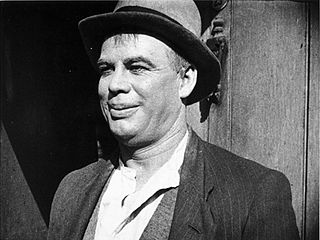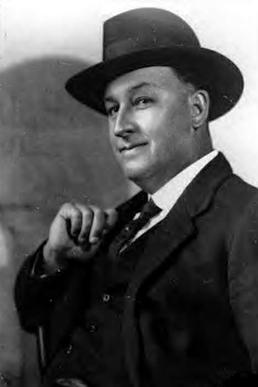Related Research Articles

The North Mount Lyell Railway was built to operate between the North Mount Lyell mine in West Coast Tasmania and Pillinger in the Kelly Basin of Macquarie Harbour.

The Sentimental Bloke is a 1918 Australian silent film based on the 1915 verse novel The Songs of a Sentimental Bloke by C. J. Dennis. Produced and directed by Raymond Longford, the film stars Arthur Tauchert, Gilbert Emery, and Lottie Lyell, who also co-wrote the film with Longford.
The history of the railways on the West Coast of Tasmania has fascinated enthusiasts from around the world, because of the combination of the harsh terrain in which the railways were created, and the unique nature of most of the lines.
The Strahan–Zeehan Railway, also known as the "Government Railway", was a railway from Strahan to Zeehan on the west coast of Tasmania.

Lottie Lyell was an Australian actress, screenwriter, editor and filmmaker. She is regarded as Australia's first film star, and also contributed to the local industry during the silent era through her collaborations with director and writer Raymond Longford.

The Blue Mountains Mystery is a lost 1921 Australian silent film directed by Raymond Longford and co-directed by Lottie Lyell.
The Tasmanian Great Western Railway was a proposed railway that was never built to connect Hobart with the west coast during the 1890s mining boom in Tasmania. It would have passed through a route somewhat similar to the current Lyell Highway through the northern edge of South West Tasmania into the west coast.

Zeehan railway station in Tasmania, was a major junction and railway yard for numerous different railway and tramway systems in western Tasmania in the town of Zeehan.

Raymond Longford was a prolific Australian film director, writer, producer, and actor during the silent era. Longford was a major director of the silent film era of the Australian cinema. He formed a production team with Lottie Lyell. His contributions to Australian cinema with his ongoing collaborations with Lyell, including The Sentimental Bloke (1919) and The Blue Mountains Mystery (1921), prompted the Australian Film Institute's AFI Raymond Longford Award, inaugurated in 1968, to be named in his honour.
Red Sky at Morning is a 1944 Australian melodrama set during the 19th century based on a play by Dymphna Cusack. It features an early screen performance by Peter Finch, who plays a convict who falls in love with the wife of a sea captain.
The Fatal Wedding is a play by Theodore Kremer and a 1911 Australian silent film directed by Raymond Longford based on the melodrama, which he and Lottie Lyell toured around Australia. It was Longford's debut feature as director and one of the most popular Australian movies of its day. It is considered a lost film.
The Dinkum Bloke is a 1923 Australian silent film directed by Raymond Longford. Despite the title and the presence of Arthur Tauchert and Lottie Lyell in the cast, the film is not a direct sequel to The Sentimental Bloke (1919) or Ginger Mick (1920).

Fisher's Ghost is a 1924 Australian silent film directed by Raymond Longford based on the legend of Fisher's Ghost. It is considered a lost film.
"Sleepy Seas" was a hit song which was first published 1920 by Private Reginald Stoneham while he managed the Melola Salon music store. It was an instant popular success with dance halls. The following year sales expanded to other music publishers. This vocal waltz was used to accompany silent movies, in the era before talkies.
Russell Mervyn Murray, commonly referred to as R. M. Murray, was general manager of the Mount Lyell Mining and Railway Co. Ltd, Queenstown, Tasmania for 22 years. Unusually for a mining man, his entire career of 44 years was spent at one location and for one company.
George Wishart Smith, sometimes written Wishart-Smith, was a railway executive in Western Australia and Railway Commissioner in Tasmania, from which service he was suspended after mounting costs and deteriorating patronage.
SS Douglas Mawson was an Australian coastal steamer that was lost in the Gulf of Carpentaria around 28 March 1923 along with 20 passengers and crew.
The Critic was a weekly newspaper published in Hobart, Tasmania, from c. 1904 to 1924 or later.

Joan Morrison was an Australian cartoonist and book illustrator. She signed her work Morrison and is best known for drawing "The Morrison Girl".
References
- 1 2 "EMPIRE EXHIBITION". The Argus . Melbourne: National Library of Australia. 8 November 1923. p. 8. Retrieved 1 September 2013.
- ↑ "Screening Australia". Smith's Weekly . Vol. V, no. 43. New South Wales, Australia. 15 December 1923. p. 12. Retrieved 5 December 2018– via National Library of Australia.
- ↑ "IMMIGRATION". Farmers' Advocate . No. 353. Victoria, Australia. 9 November 1923. p. 1. Retrieved 11 March 2024– via National Library of Australia.
- ↑ "ADVERTISING TASMANIA". The Daily Telegraph . Vol. XLIV, no. 60. Tasmania, Australia. 10 March 1924. p. 5. Retrieved 5 December 2018– via National Library of Australia.
- ↑ "Screening Australia". Smith's Weekly . Vol. V, no. 43. New South Wales, Australia. 15 December 1923. p. 12. Retrieved 25 August 2024– via National Library of Australia.